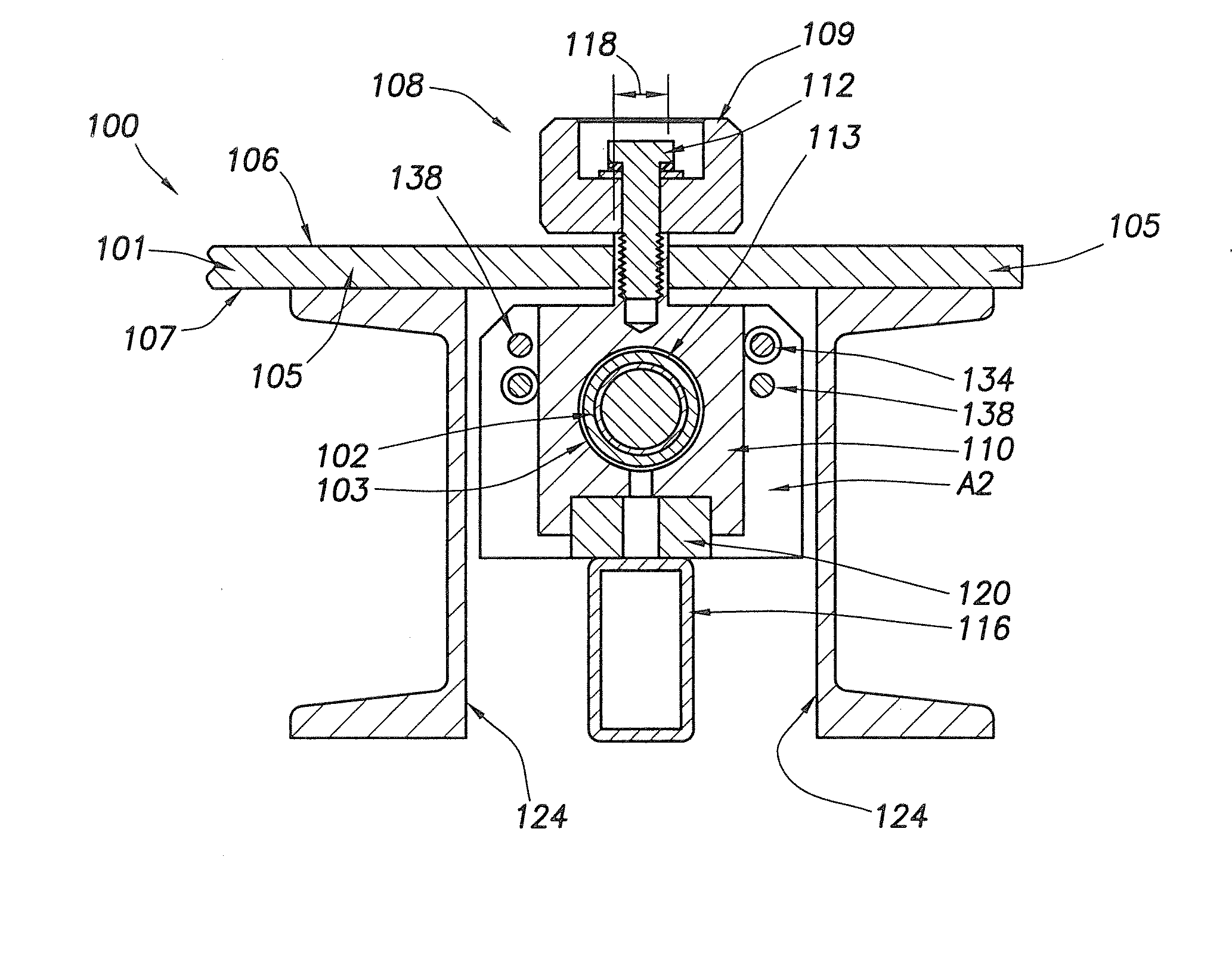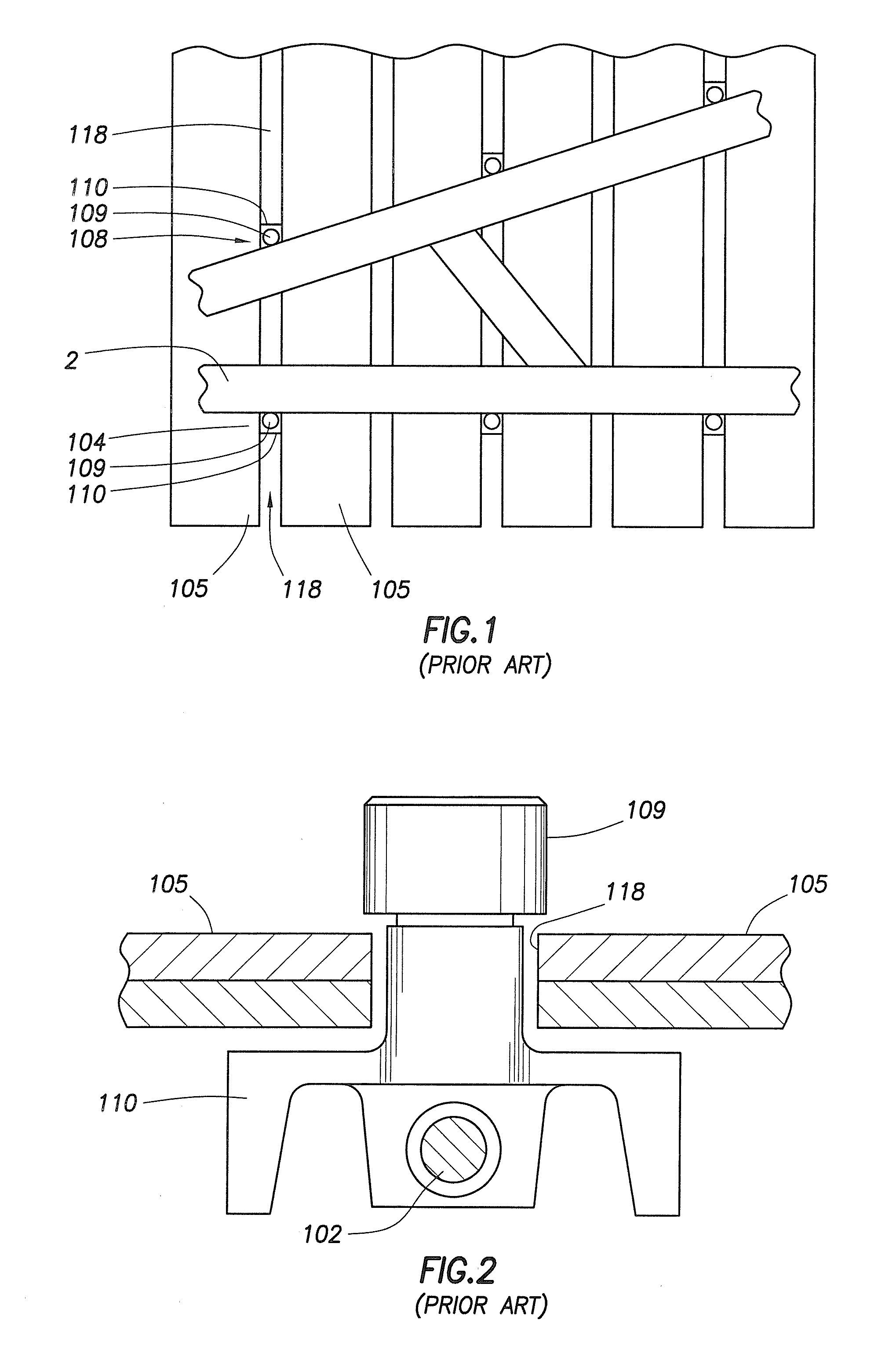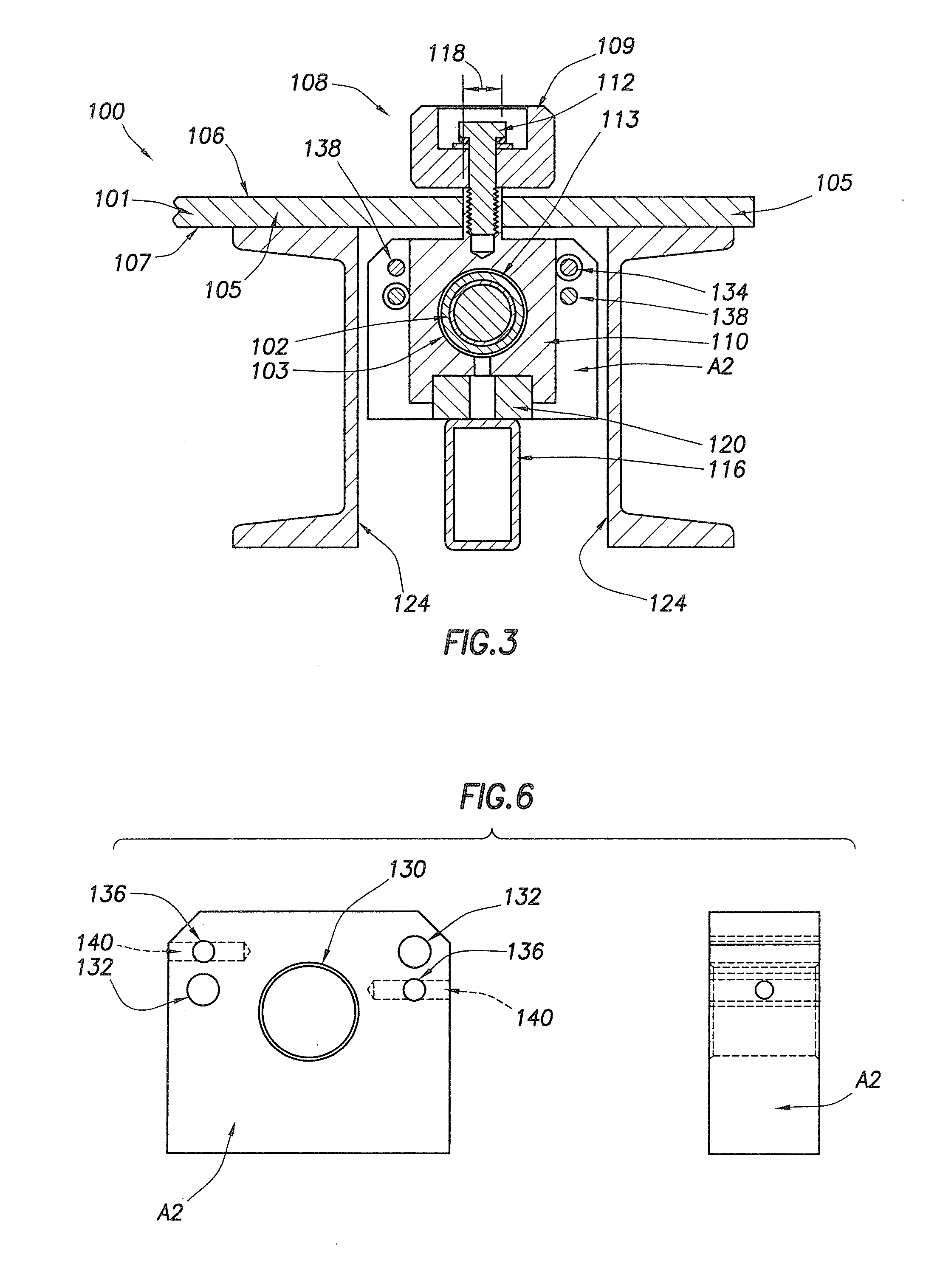Truss assembly table with automatic jigging
a technology jig setting system, which is applied in the direction of manufacturing tools, work holders, metal-working machine components, etc., can solve the problems of affecting the reliability of jig system use, affecting the safety of truss assembly table,
- Summary
- Abstract
- Description
- Claims
- Application Information
AI Technical Summary
Benefits of technology
Problems solved by technology
Method used
Image
Examples
Embodiment Construction
[0029]FIG. 1 illustrates the prior art truss jig positioning system 100 employed on a table 101 that has and defines a support plane 104 on which work pieces or building elements, such as wood boards 2 or other building materials, are supported in proper position for forming a structure such as a support truss for a roof of a building. The table 101 may comprise a plurality of segments 105 that have upper surfaces 106 that substantially lie in and define the support plane or work surface 104 of the table 101. The upper surface of each of the table segments 105 may be substantially planar, and a plane of the segments may be oriented substantially horizontally. The table segments 105 also have lower surfaces 107.
[0030]The segments 105 of the table are separated by openings or jigging slots 118 which extend laterally across the table 101 and preferably extend substantially parallel to each other. Each of the slots 118 may extend substantially perpendicularly to the length of the table ...
PUM
| Property | Measurement | Unit |
|---|---|---|
| length | aaaaa | aaaaa |
| areas | aaaaa | aaaaa |
| rotational movement | aaaaa | aaaaa |
Abstract
Description
Claims
Application Information
 Login to View More
Login to View More - R&D
- Intellectual Property
- Life Sciences
- Materials
- Tech Scout
- Unparalleled Data Quality
- Higher Quality Content
- 60% Fewer Hallucinations
Browse by: Latest US Patents, China's latest patents, Technical Efficacy Thesaurus, Application Domain, Technology Topic, Popular Technical Reports.
© 2025 PatSnap. All rights reserved.Legal|Privacy policy|Modern Slavery Act Transparency Statement|Sitemap|About US| Contact US: help@patsnap.com



